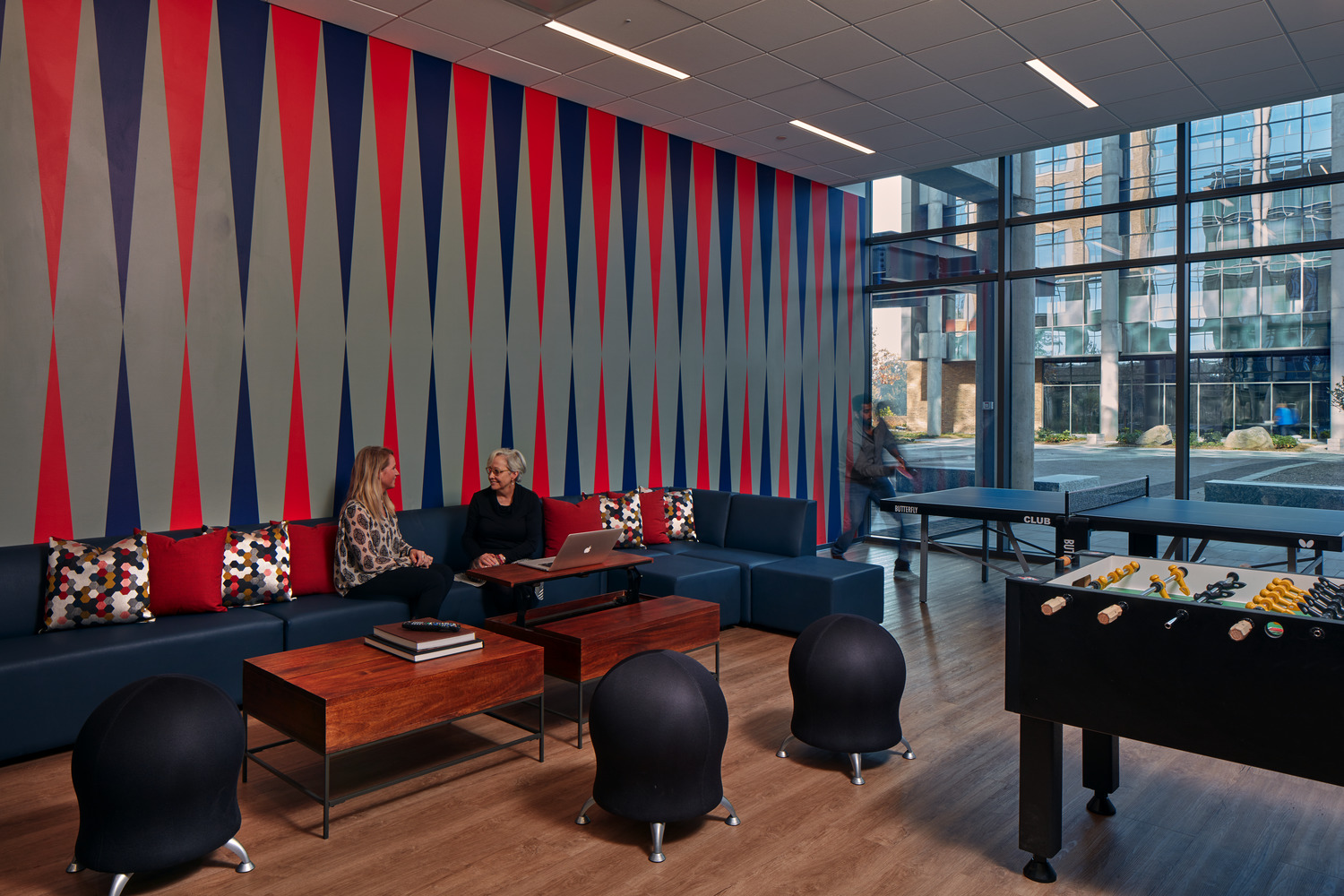The ever-evolving modern workplace is a complex network of highly connected workers where knowledge and experience are valued and immediacy and innovation are highest priority. This means the office is so much more than just rented desk space – it’s a platform for change that not only attracts and retains talent but provides engaging spaces for productive individuals and teams.
When designing an effective, efficient office space, collaboration opportunities are always top of mind for our team of Workplace Experts. These communal spaces support seamless transitions between work modes – from formal meetings to informal brainstorming sessions – that help to satisfy five different employer and employee needs:
- Attracting and retaining talent: Companies are acknowledging group-work’s impact on success and are using enhanced spaces and enhanced tactics that support collaboration as recruitment and retention tools. Additionally, providing opportunities for networking and idea-sharing are highly appreciated by highly satisfied employees.
- Building a better workflow: Research suggests group-work yields more creative and innovative output. Employees who work in groups often spend 17% more time developing new ideas and reported more hours of productivity than people who spend more time working independently.

- Fostering well-being: An investment in the physical workplace means happier and more engaged employees. Offering amenities for wellness, comfort and alternative environments for work fosters a sense of community and leads to increased company loyalty.
- Inspiring engagement: Designing a space that creates a physical, emotional and intellectual experience engages employees for additional buy-in to the company’s core values. Employees can be more productive and creative when they feel connected to their environment. Inspiration from hospitality design can be applied to create a holistic work environment that is authentic to the organization.
- Creating positive experiences: An engaging, vibrant and flexible space delivers an environment employees enjoy. The workplace is becoming more relaxed and it is expected to continue to transition to an even more informal environment over the next five years. By focusing on people for environmental and organizational design drivers, the environment is responsive rather than dictating movement and process of employees.
Even if some employees prefer more solitary, independent time than others, having group work as a readily available work option has proven to be a valuable asset for many businesses. Why? Because making an investment in people and their spaces creates a happier, healthier workforce that is more productive and generates more revenue for the organization.




